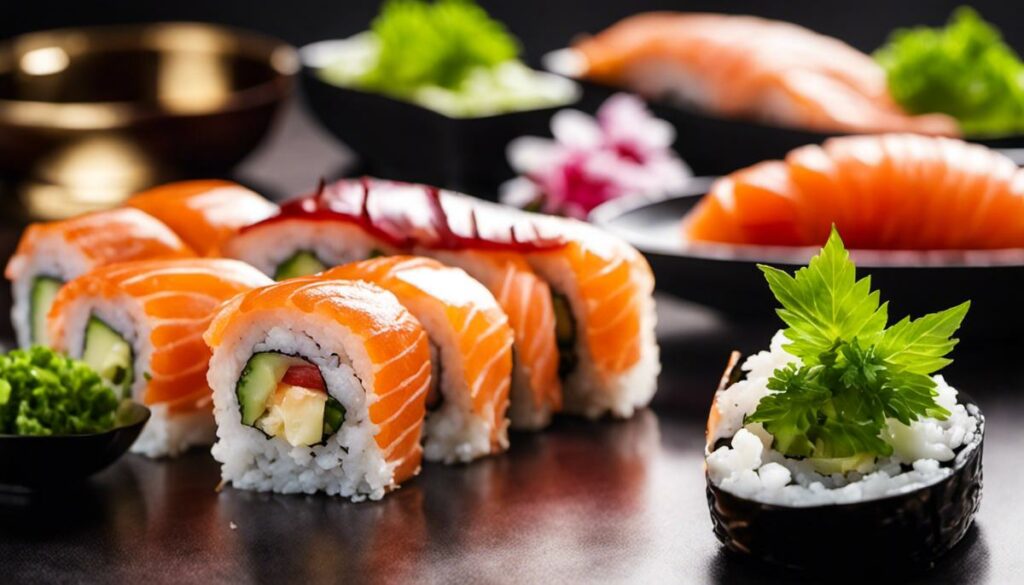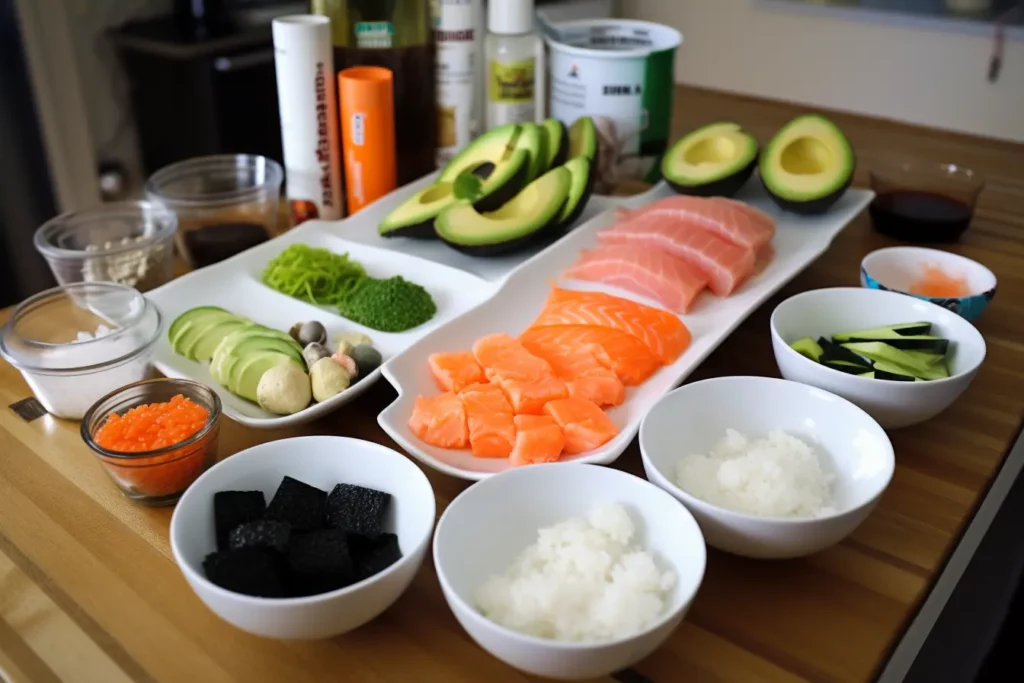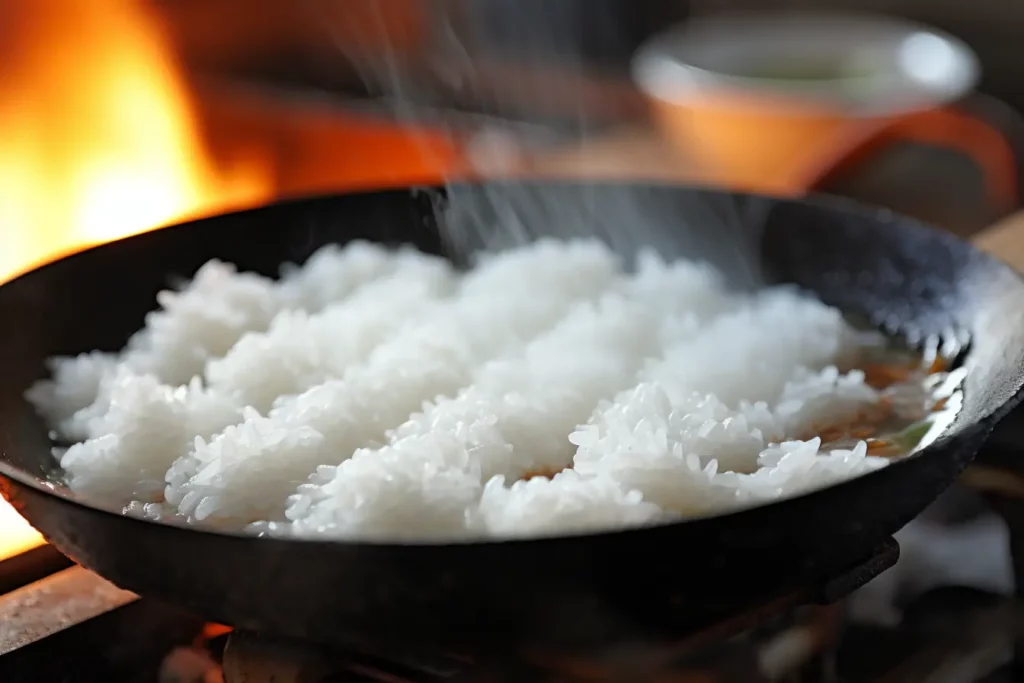The unique art of sushi preparation and the incomparable role of ginger in it captivate gourmets and restaurateurs worldwide. With a centuries-old history rooted in Japanese cuisine, sushi has established itself as a culinary masterpiece that captivates with both its flavors and aesthetics. Sushi represents the quintessence of Japanese cuisine and culture. The balance between rice, fish, seafood and spices, in which ginger occupies a prominent position, is fascinating.
- Introduction to sushi and ginger: Sushi is more than just a dish, it is a form of expression, an art and a symbol of Japanese culture. The use of ginger in sushi adds an extra dimension to the experience and further highlights the already excellent flavors.
- Sushi aesthetics: Creating sushi that is artistically pleasing and tastefully satisfying requires a combination of technical skill, creativity, and a deep understanding of the ingredients and their interrelationships.
- Ginger in modern cuisine: ginger has found a firm place in the modern gastronomic landscape; It plays a central role in sushi preparation, but other cuisines have also discovered it as a spice or aroma carrier.
Presentation of sushi and ginger
Sushi and ginger, two tasty elements that create a remarkable harmony of taste and health. In the modern gastronomic landscape, they have become fixed symbols of sophistication and health.
Sushi, a Japanese national dish, is an intriguing combination of raw fish and leavened rice. The creation requires not only cooking skills, but also meticulous artistry. The choice of fish, the perfect timing and the clean presentation add to the uniqueness of this dish and elevate it to higher gastronomic heights.
The intricacies of sushi and its popularity are a direct reflection of the emerging trends in modern society that value quality, health and aesthetics. Sushi, aesthetic and intriguing, represents a fine balance between culinary art and healthy food. It offers a wide range of flavors, textures, and nutrients, which adds to its appeal.
Ginger, on the other hand, is known for its exceptional health benefits. Combined with sushi, it completes the dining experience by providing a crisp and spicy contrast that enhances the flavor of the main components. Consuming ginger between sushi portions also cleanses the palate, making it possible to appreciate the true flavor of each sushi variant.
In addition, ginger is a tonic for the immune system due to its antioxidant and anti-inflammatory properties. It is therefore not only a condiment, but also a natural supplement for a healthy lifestyle.
The combination of sushi and ginger is a winner in taste and health at the same time – a representation of the modern lifestyle that promotes enjoyment and self-care at the same time. So, the next time you enjoy sushi and ginger, take a moment to appreciate their subtleties and the flavor they leave on your palate.
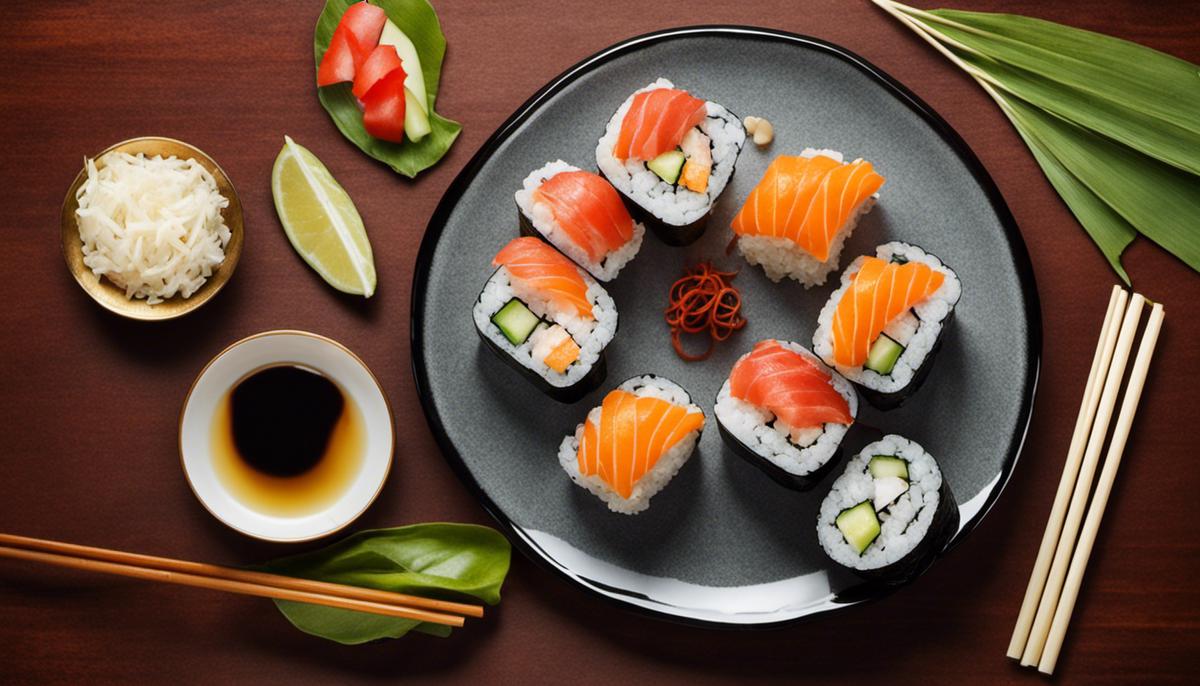
Aesthetics of Sushi
First of all, I would like to emphasize that sushi is not just a meal – it is rather a life experience, a subtle art form full of flavor and visual appeal. This iconic Japanese dish not only serves to provide nutrients, but is also a reflection of the aesthetics and delicacy that have become at the heart of Japanese culture.
Let’s start with the presentation of sushi. Each piece is carefully and strategically placed to create a balanced yet dynamic pattern – each roll, each garnish, is part of a larger whole. We’re talking about a living work of art, where the arrangement is just as crucial as the sushi itself.
Then there are the intentional contrasts that each sushi master creates in their dishes. They are not only focused on taste contrasts, but also on colour contrasts. The bright orange of the salmon against the soft white of the rice, punctuated by the inviting green of the avocado. Sushi is undoubtedly a visual experience, just as it is a culinary one.
Sushi perfectly exemplifies the central principles of minimalist design: simplicity, functionality and harmony. The eye is attracted by the simple shapes and clear contours, while the palate is captivated by the balanced aromas. It’s not just a performance of food, it’s a celebration of life and nature.
Sushi is more than just the individual ingredients. It expresses a philosophy of life that boils down to beauty, simplicity and harmony. It invites us to pause for a moment and appreciate the beauty around us, to enjoy the carefully composed harmony of taste, texture and color.
In conclusion, the aesthetics of sushi go far beyond what our eyes and tastes meet. It makes us take our time and enjoy the moment, both visually and gastronomically. It really is an art, and as with any art, beauty is in the eye of the beholder.
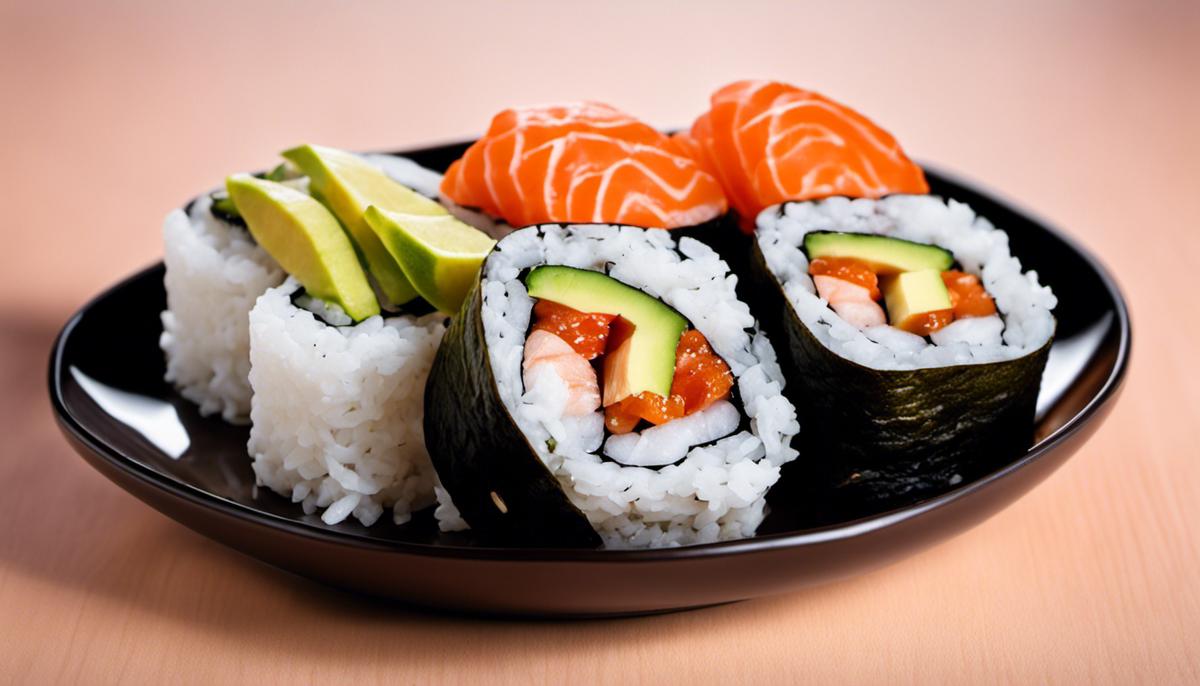
Ginger in the modern kitchen
Ginger has established itself as a popular ingredient in contemporary cuisine, especially in Asian and especially Japanese cuisine. In this modern and trend-conscious context, ginger has taken on an important role and can be used in a variety of ways. Its distinctive flavor and many health benefits make ginger an irreplaceable ingredient in the eclectic world of food.
The combination of ginger and sushi emphasizes the exquisite tegustatory nuances and paves the way to a gastronomic enlightenment. Ginger is not just a side dish, but an integrated eliment of the eating experience. And it’s not just about the taste. The aesthetic appearance of a carefully prepared sushi platter, complemented by finely sliced pieces of pink ginger, is a visually pleasing representation of an edible art form.
Offering ginger near sushi is a sign of delicacy and attention to detail. The clean and minimalist arrangement of a sushi platter shows appreciation for the less-is-more design principle and celebrates the harmony and simplicity that contrasts with the often hectic contemporary lifestyle. It’s essentially an invitation to truly appreciate the moment.
The presentation of sushi with ginger is a manifestation of attention to detail, beauty and function. It is a culinary journey that turns viewers into participants. It allows interaction with the dish, which is not only eaten, but also contemplated, perceived and appreciated in its entirety.
If you take the time to appreciate the aesthetics and composition of sushi, you will quickly notice the role that ginger plays. Its color, shape and texture fit perfectly into the overall picture and exert a certain influence on the perception and experience of food.
It’s remarkable how the essence and simplicity of sushi design can offer so much art and indulgence, and how ginger, often thought of as a simple side dish, can play a crucial role in shaping this experience. Whether visual or gastronomic, ginger’s influence on sushi is undeniably an inspiring example of the magic hidden in details.
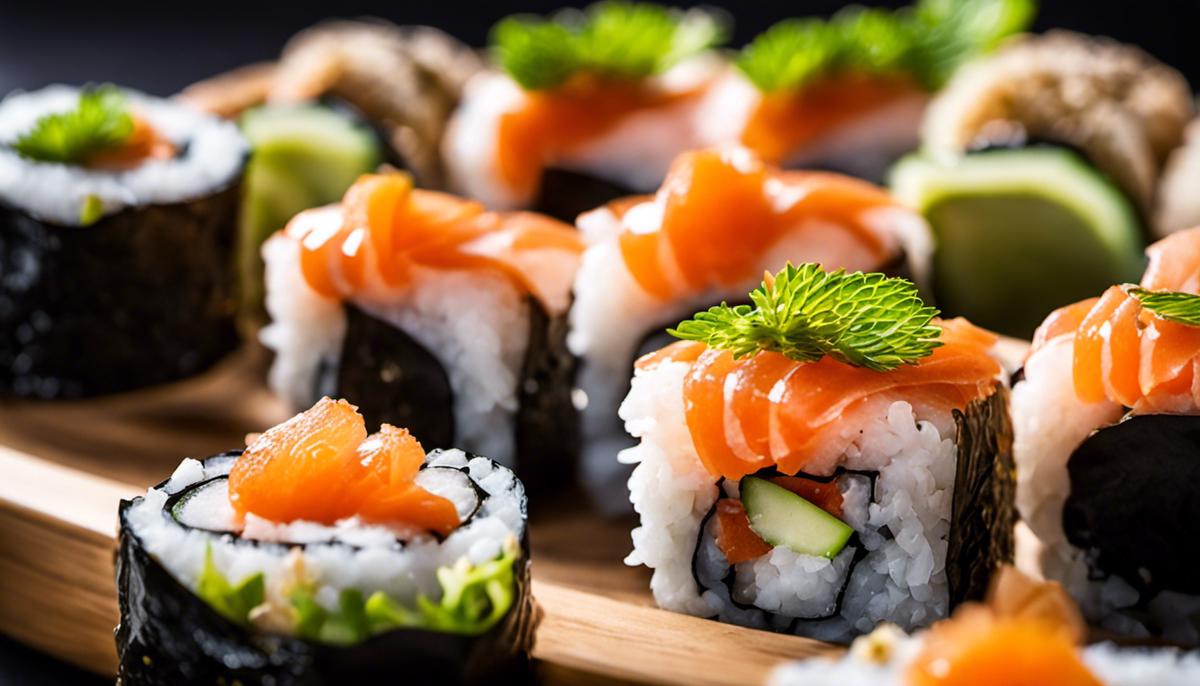
The fine balance and harmony expressed in a piece of sushi is further enriched by the addition of ginger. Sushi and ginger have collectively embarked on a culinary journey that has made them global phenomena. Not only are they culinary delights, but they also reflect the culinary heritage and aesthetics of Japan. Their use has revolutionized the kitchen landscape, opening up a new level of taste and presentation. Taken together, they create a culinary experience whose sophistication and complexity can captivate both novices and connoisseurs.
- Sushi and ginger are much more than just food, they are symbols of cultural interaction and respectful treatment of ingredients and nature.
- Sushi’s great aesthetic is a testament to its masters’ fine technical skills and deep understanding of the art of sushi making.
- The use of ginger in modern cooking shows its versatility and importance. From sushi to global dishes, the depth and complexity it brings to the culinary world is essential.
